Starboard has been busy this past year. Almost the entire range of wing foils (and also the wind foils) has been completely renewed. And we have to tell them, Starboard has really put in the work. With the new set-up, Starboard is taking a big step. We were one of the lucky ones who had access to the new material all winter. So we were able to gain a lot of experience. Read in this article what is to come and what our experience is.
The changes of the Starboard Wingfoil range in outline
- S-type the low aspect series: renewed from 1800 cm2 and smaller
- E-type the medium aspect series: from 1400 cm2 and smaller
- Glider, the high aspect series: completely renewed with new large sizes
- Glider PRO, the extreme high aspect wings, unchanged from 2023
- X-15 Martin Fisher racing wings, new series of extremely high aspect wings for racing
New profile carbon masts
For wing foiling, Starboard has developed a new range of carbon masts with a new and much thinner profile. We already know the new shape of the masts from the Starboard wind foil masts that were introduced in 2023. Due to the thinner profile, the glide is noticeably better. This ensures that your transitions are smoother, that wave riding is easier and of course you notice that the top speed is higher. Starboard supplies the top plate carbon masts in 3 different qualities and in different lengths;
The cheapest variant is the C300 Monolithic carbon mast with a foam core. Ideal for freeriding and is extremely light. This mast is available in 72 cm, 82 cm and 92 cm. For even better response and performance, there is the C400 colid core mast. This mast is significantly stiffer and delivers better performance. This mast is mainly intended for racing. As a superlative, the solid core mast is also available in the C600 carbon version. The C400 and C600 masts are both available in an 88 cm and 95 cm variant.
Of course, the aluminium masts will also remain available and will remain unchanged compared to the 2023 model year. Also, the Quick Lock II fuselage system remains unchanged and fits on all Starboard masts.
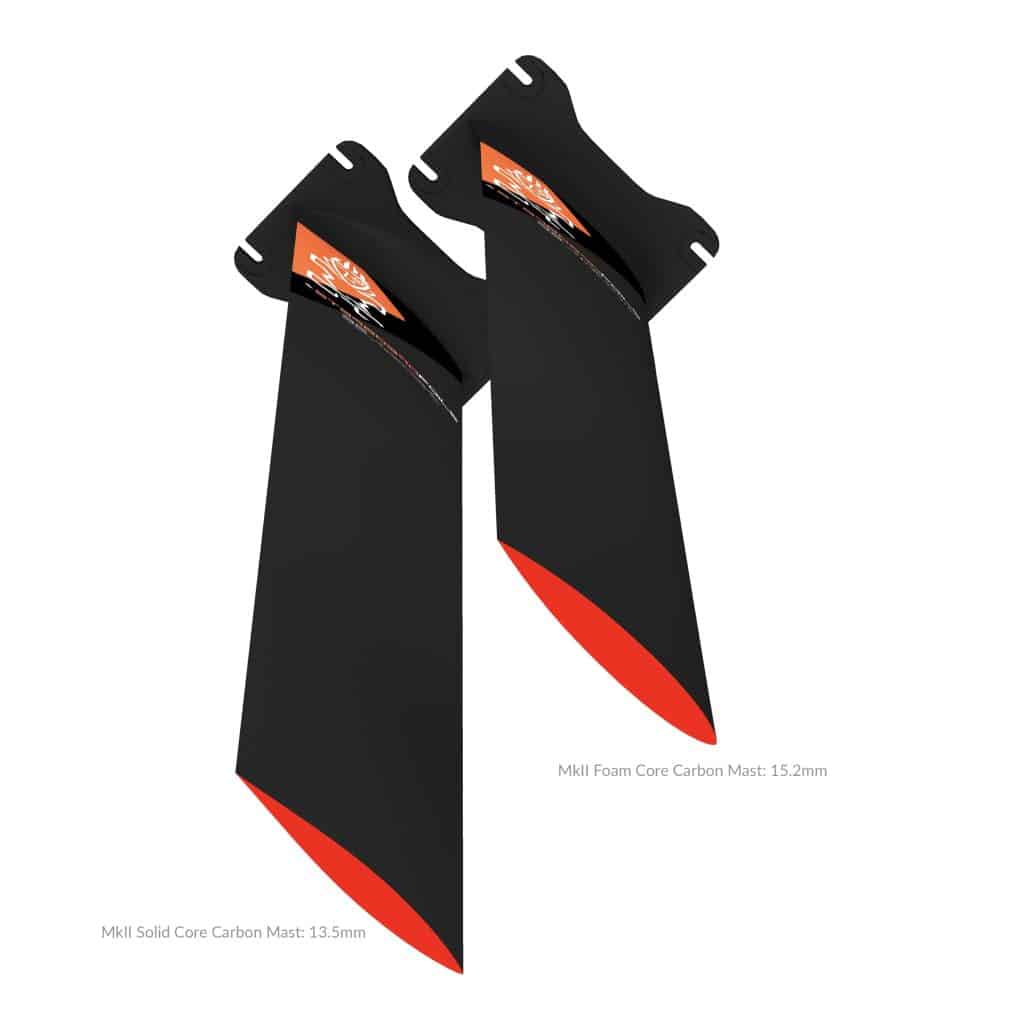
New generation of wings through collaboration with Martin Fischer
Starboardfoils has teamed up with Martin Fisher, designer of foils for American Cup teams. His knowledge and the extremely advanced design software provide a major update to Starboard’s wing shapes. The first concrete project is the wingsets that have been developed for the X-15 one design class . However, Starboard has very clearly translated the insights and experiences gained into all 2024 designs wingfoils and wind foils. Across all the wing foils we’ve tested, these are the most noticeable changes;
- Much faster and more dynamic foil behavior
- Accessibility and forgiveness has been improved even further
- A lot of lift at take-off, at higher speeds controllability (balance and degree of lift) is greatly improved
- The glide of the wings (or hydrodynamics) is noticeably better, which means that you go through the water with less resistance.
S-type just as easy, but more dynamic
The large sizes S-type (the 2400 and 2000) remain unchanged. These excel in a very easy and stable foiling behavior. Something people who are in the market for such large sizes of wings would like. The S-type 1800 and 1500 have been given a completely different shape. The aspect ratio is slightly larger and the profile has become thinner. These wings clearly feel faster and more playful than the previous generation. Fortunately, the friendly character has been preserved.
In particular, the deployment range of the 1500 is remarkably large. People weighing up to 80 kilos don’t really need a larger front wing and have fun with this front wing up to more than 20 knots. As far as we are concerned, the 1500 is highly recommended!
The smaller sizes of the S-type (1300, 1000 and 725) are the so-called Zane Signature wings and are very extreme, intended for the pros who want to make extreme and aggressive turns and moves.
-
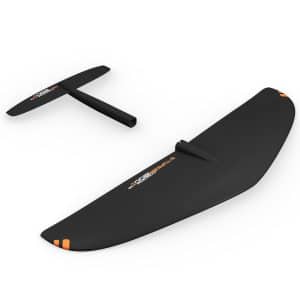
Starboard S-Type wing
€599,00 – €999,00 incl. VAT Select options This product has multiple variants. The options may be chosen on the product page
E-type: particularly all-round for freeride and carving
As with the S-type, the largest 2 sizes (2000 and 1700) have not changed. The sizes from 1400 to 625 are completely new. To be honest, the old E-type series was really in need of a good upgrade. We wingfoiled a lot of hours last winter with the Glider II 900, 750 and 625 cm2 front wings.
What is striking is how easy it is to wing foil with these relatively small wings. They quickly give a lot of lift and at high speed they remain well controllable. As far as we are concerned, the ideal wingset for freeride and carving on water with short waves.
The wings feel really fast and have a good glide. Our favorite size: the E-Type 625 and E-type 750.
-
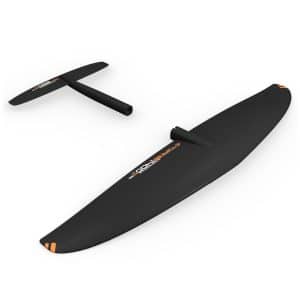
Starboard E-Type wing
€499,00 – €949,00 incl. VAT Select options This product has multiple variants. The options may be chosen on the product page
Glider 2, a lot faster
The old glider range had the strong feature of building up lift very quickly, so that you can get on the foil quickly with this high aspect wing. The downside we found was that the Glider 1 didn’t feel very fast or dynamic. That has been greatly improved with the Glider 2 .
Due to its large aspect ratio (maximum 9.8) you get to the foil faster than with a comparable E-type and the final speed is considerably better than with the previous generation. The glide of the Glider 2 has also improved.
The Glider 2 is at its best on flat water or on water with longer waves. Riding a wave, turning longer turns of a wave, that’s where the Glider 2 really comes into its own. Our favorite is the Glider 2 750 cm2. With about 10 to 12 knots with a 5.0m2 you can foil well.
-
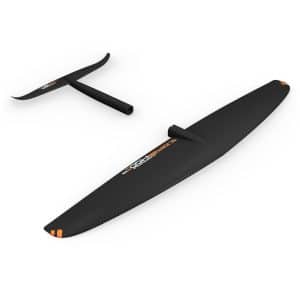
Starboard Glider MKII
€419,00 – €999,00 incl. VAT Select options This product has multiple variants. The options may be chosen on the product page
Glider PRO, unchanged and a lot more extreme
The Glider PRO was introduced in 2023 and hasn’t changed for 2024. With an aspect ratio of up to 12.2, the Glider PRO is a lot more extreme than the Glider 2. The behavior on the foil is much more nervous and the transitions a lot more difficult as a result.
Once you have the Glider Pro under control, you will be treated to an extremely efficient glide. The Glider Pro is available in the following sizes;
- Glider PRO 1050
- Glider PRO 900
- Glider PRO 700
- Glider PRO 550
-
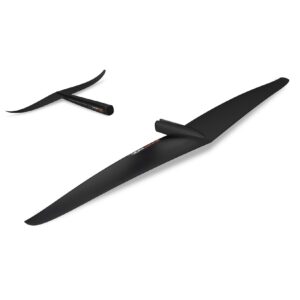
Starboard Glider Pro wings
€449,00 – €989,00 incl. VAT Select options This product has multiple variants. The options may be chosen on the product page
Stabilizer with integrated carbon tail piece fuselage
The biggest change with the stabilizers is that the back wing and the tail piece fuselage now form a whole. Fewer loose parts and bolts makes for a better glide, but that also means you can’t trim the stabilizer anymore. Is this a disadvantage? Thanks to the new generation of front wings, we no longer felt the need to trim the stabilizer ourselves. The standard set-up is well balanced. The following stabilizers are available;
- RAZR back wing 180, 220 and 220 > for maximum manoeuvrability
- RAZR H.A.R. 250 -> gives the most lift and stability
- PRO 180 -> works best with smaller sizes Glider and Glider PRO and E-Type
- Pro H.A.R. 180 -> works best with larger sizes Glider and Glider PRO
The PRO is faster and has a slightly better straight-line stability compared to the RAZR. This is because of the upright tips.
-
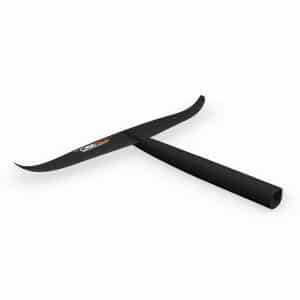
Starboard Tail wing PRO
€289,00 incl. VAT Select options This product has multiple variants. The options may be chosen on the product page
Martin Fischer Signature high-end racing wings
We have already talked about the collaboration with Martin Fischer above. The first result is a series of race wings with an extreme aspect ratio (up to 14.2!) with 1 goal: to go as fast as possible in a straight line. There are 3 Martin Fischer front wings available in sizes 820, 720 and 560 cm2. The 820 cm2 is part of the X-15 one design wing foil set. The Martin Fischer tail wings have a surface area of 240 and 200cm2. The latter is also part of the X-15 one desing wing foil set.
The Martin Fischer wings do not fit on the well-known Quick Lock II system from Starboard. These wings fit the EVO fuselages (69 cm) from Starboard that are also used for wind foiling. This construction is stiffer and stronger than the Quick Lock II system.
We’ve already tried out the 820 front wing and just like with the Glider Pro, it’s amazing how much lift this front wing gives. The biggest difference with the Glider PRO is that these race wings are really much faster and also like to go upwind and downwind.
-
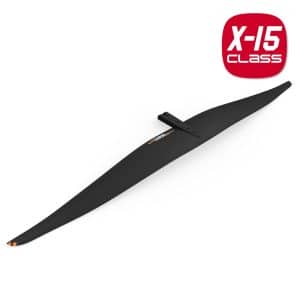
Starboard Front Wing EVO Martin Fischer
€499,00 – €599,00 incl. VAT Select options This product has multiple variants. The options may be chosen on the product page
Want to try out a Starboard wingfoil yourself?
Would you like to test one of the new Starboard wingfoils yourself? We have a number of sizes of most types that can be tested. Send us an email and we will be happy to schedule a test appointment with you.


